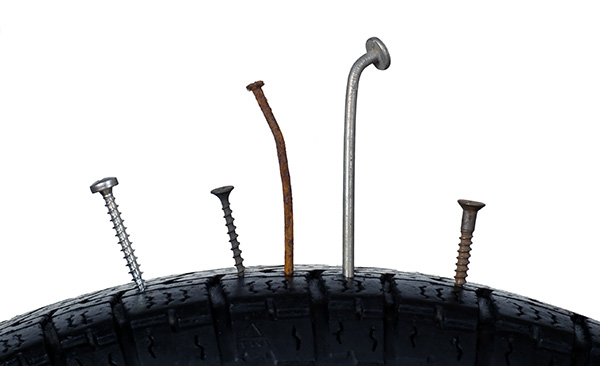
Have you ever experienced that sinking feeling when you realize your tire has been punctured? Whether it's a nail on the road or a sharp piece of debris, a punctured tire can put a serious damper on your day. But the real question that follows is - Should I repair the tire or replace it entirely? This dilemma is more common than you might think, and making the right decision can impact your safety and wallet.
Understanding the Extent of Damage
Before deciding whether to repair or replace a punctured tire, it's crucial to assess the extent of the damage. Not all punctures are the same. Small punctures, such as those caused by nails or screws, can often be repaired if they are in the tread area.
However, if the puncture is on the sidewall or shoulder of the tire, repair is usually not recommended due to the increased risk of failure. Inspect the tire carefully to see where the puncture is located and how severe it is. If the puncture is less than ¼ inch in diameter and confined to the tread, there's a good chance it can be repaired safely.
The Importance of Professional Inspection
While you might feel confident in your ability to assess the damage, it's always a good idea to have a professional take a look. Tire technicians have the expertise and tools needed to evaluate the puncture and determine if the tire can be safely repaired.
We will remove the tire from the rim and inspect the interior for hidden damage that might not be visible from the outside. This thorough inspection is critical because internal damage can compromise the tire's integrity, even if the puncture appears minor.
Repairing a Punctured Tire
If the puncture meets the criteria for repair, a tire technician will typically use a plug-and-patch method. This involves removing the object that caused the puncture, sealing the hole from the inside with a patch, and inserting a plug to fill the puncture path.
This dual approach ensures a secure, airtight seal and restores the tire's structural integrity. It's worth noting that some DIY tire repair kits are available, but they don't provide the same level of safety and reliability as a professional repair. Always prioritize your safety by opting for professional repairs whenever possible.
When to Replace a Punctured Tire
Sometimes, the best course of action is to replace the tire entirely. This is particularly true if the puncture is large, located on the sidewall, or if there is significant internal damage. If the tire has already been repaired multiple times, its overall safety and performance may be compromised.
Tires are designed to withstand a certain amount of wear and tear, but repeated repairs can weaken their structure. In such cases, investing in a new tire is the safest option. Remember, driving on a compromised tire can lead to blowouts and accidents, so it's better to be safe than sorry.
The Cost Factor
Cost is often a significant consideration when deciding whether to repair or replace a punctured tire. Generally, repairing a tire is much cheaper than replacing it. A professional repair costs less than $50, while a new tire can range from $100 to $300 or more, depending on the type and brand.
However, it's important to weigh the cost against the potential risks. Skimping on tire safety to save money in the short term can lead to more expensive and dangerous consequences down the road. Always factor in the safety and reliability of your tires when making your decision.
Maintaining Tire Health
Preventative maintenance can help minimize the risk of punctures and extend the life of your tires. Regularly check your tire pressure, as underinflated tires are more susceptible to damage. Rotate your tires according to the manufacturer's recommendations to ensure even wear.
Also, be mindful of the roads you drive on. Avoiding debris and poorly maintained roads can reduce the likelihood of punctures. By taking these simple steps, you can enhance the durability and performance of your tires.
Don't risk your safety with a compromised tire. Come to Marc Yount's Tire Pros for expert advice and quality tire replacement and repair options.